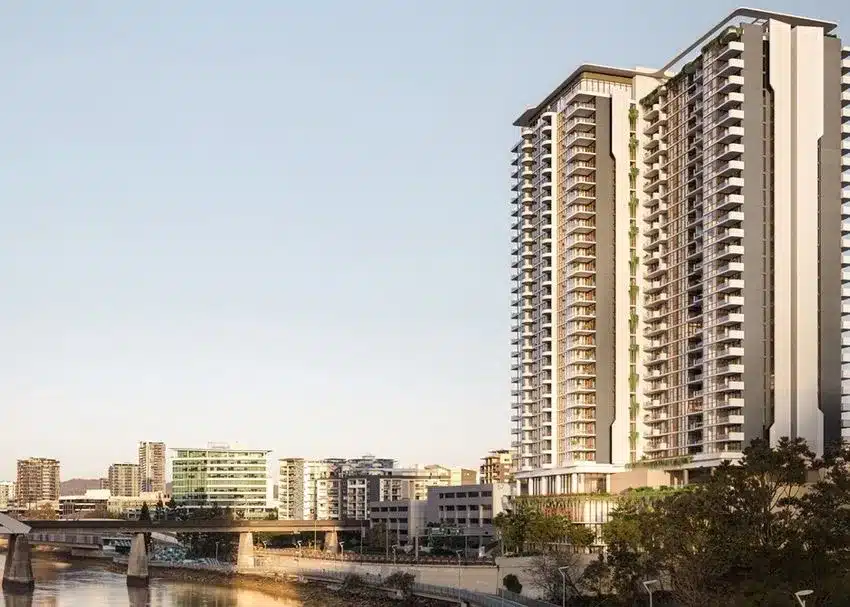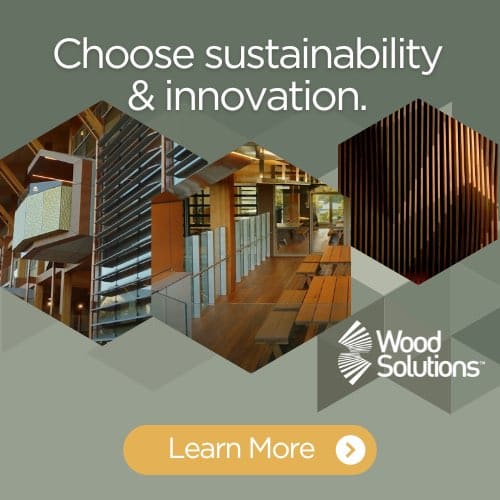Sumitomo Forestry is expanding its “build to rent” capacity in the Australian market after announcing a new partnership with Australian-based Cedar Pacific to develop projects in Brisbane, Canberra, Melbourne and Auckland.
The first project, now under construction, is at 50 Quay Street in Brisbane, involving a 475-unit project built by Hutchison Builders under the Queensland Government’s affordable BTR program.
“This partnership allows us to combine both companies’ development expertise with leading-edge sustainability practices, creating communities that are not only desirable places to live but also contribute positively to the environment and communities in which they are located,” according to Cedar Pacific CEO Bernie Armstrong.
“We are honoured to partner with Sumitomo Forestry to develop high-quality BTR communities in Australia and New Zealand.”

According to Sumitomo Forestry Australia’s managing director, Yasuhiro Odagane, the group is committed to expanding its sustainable development business globally, with this partnership with Cedar Pacific representing “a significant step forward”.
“Our combined expertise will allow us to deliver innovative BTR communities that promote using timber technologies such as Cross-Laminated Timber (CLT) to meet residents’ needs and contribute to creating a more sustainable future.”
More than 4,000 global mass timber build-to-rent projects in the pipeline
It comes as Sumitomo Forestry is now targeting the North American market and last year secured the operating platform for the United States’ fastest-growing developer and builder.
The US $215 million deal (AU $340 million) will see one of the world’s largest forestry companies turn JPI into a subsidiary and double the number of apartments under construction to 8,000.
Significantly, the new acquisition will see a greater focus on mid-rise construction and the use of mass timber as part of a global plan to substantially grow its “build to rent” portfolio of apartment assets.
It also adds to the portfolio of US housebuilders under its control, including North Carolina-based Crescent Communities, Dallas-based Gehan Homes, Texas-based Bloomsfield Homes and Brightland Homes, Washington-based MainVue Homes, Maryland-based DRB Group and Utah-based Edge Homes.
Most of Sumitomo Forestry’s interests have focused on custom-built detached and semi-detached housing and “MOCCA” timber solutions, concentrating on low-rise, nonresidential buildings such as retail shops, childcare centres, and schools.
The acquisition substantially increased its volume and capacity in the US market, with JPI constructing more than 5,000 apartments last year.
Sumitomo Forestry is now looking to utilise “2 x 4” mass timber construction to build net-zero dwellings at scale.

According to Atsushi Iwasaki, CEO of Sumitomo Forestry USA, “This collaboration (with JPI) is a milestone in our continued commitment to fostering sustainable communities.”
Wood Central understands that JPI will keep its name and maintain its headquarters in Texas and satellite offices in San Diego and Irvine, California.
“Sumitomo’s dedication to JPI is clear,” according to Mollie Fadule, CFO and Investment Manager for JPI, “having committed over (US) $200 million in seven JPI communities over the past four years.”
The news comes as Sumitomo Forestry announced last year the purchase of 130,000 hectares of US forest assets as part of their carbon abatement strategy.
The investment was made as part of its “Mission TREEING 2030” initiative – and will generate 1 million tons of annual carbon credits equivalent to 1 million tons of C02 through afforestation and thinning.
“Mission TREEING 2030” is Sumitomo Forestry’s long-term vision to use planted forests and forest products to achieve total decarbonisation by 2030. Its reach is truly global.
As part of its “Wood Cycle”, it “strives to increase the CO2 absorption of forests and store carbon for long periods by popularising mass timber buildings to contribute to decarbonisation worldwide.”
In Japan, supported by government subsidies covering construction and procurement costs, it is forging ahead with a project to develop the world’s tallest hybrid timber tower in Tokyo.

Whilst in the UK, its subsidiary, Bywater, actively promotes mass timber construction in the UK and across Europe, including a 6-storey mass timber office building in London.
Bywater has already developed several mass timber buildings across the UK, including London, Manchester, Glasgow and Belfast and is now looking to expand its footprint across Europe.
“Since opening our first office in Amsterdam (in 1995), Sumitomo Forestry has been consistently supplying the Japanese market with high-quality European timber housing products,” it said in a statement.
“With one of the highest transaction volumes of European timber among Japanese companies, we are utilising our network to support the expansion of real estate development operations in Europe, which boasts the world’s largest production volume and technological capabilities of CLT and other engineered wood.”
Sumitomo’s presence in the Australian and NZ marketplace
It also has a strong presence in the Australian market and has expanded its residential development business across major Australian cities over the past 15 years.
It is now ranked as the third largest real estate developer by volume of builds and reported more than 3,000 dwellings under construction in QLD, NSW, Victoria, and WA in 2021.
In recent years, “build-to-rent” construction has been identified as a solution to the housing crisis – with more than 60 build-to-rent projects, either planned or in construction, delivering 20,000 new dwellings in Australia, according to Ernst & Young.
Build-to-rent housing is relatively common in countries like the US and the United Kingdom, but it’s only recently gathered momentum in Australia.
JLL research found that before this year, there were only about 4,486 build-to-rent apartments across the country, with approximately 2,000 under construction last year.

However, this number is predicted to double by the end of next year. According to Steve Mann, CEO of the NSW branch of the Urban Development Institute, “It is an important part of the future housing mix.”
“It’s not going to be the game changer in the early years; that’s for sure; it’s more in the long term,” Mr Mann said.
Governments are also throwing their support behind as they look for ways to boost options for renters.
The federal government has introduced tax concessions to attract more investment in build-to-rent developments. At the same time, states such as NSW and Victoria offer a 50% reduction in land tax.
Last month’s NSW budget included AU $60 million to trial build-to-rent projects in the state’s Northern Rivers and Illawarra-Shoalhaven — two regions experiencing an acute housing shortage.
Dr Fotheringham from AHURI argued Australia had lagged behind other countries because the previous federal government “didn’t come to the table” with subsidies for the sector.
“I think it will contribute, but I don’t think it’s going to change our housing system radically,” he said.






